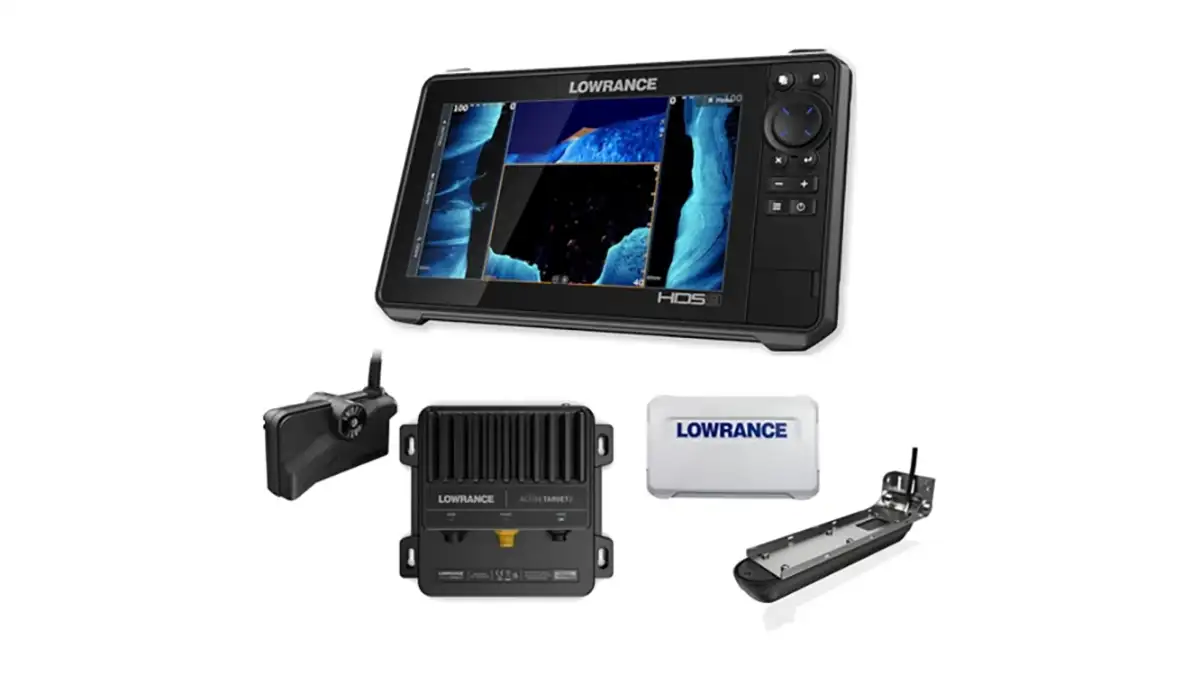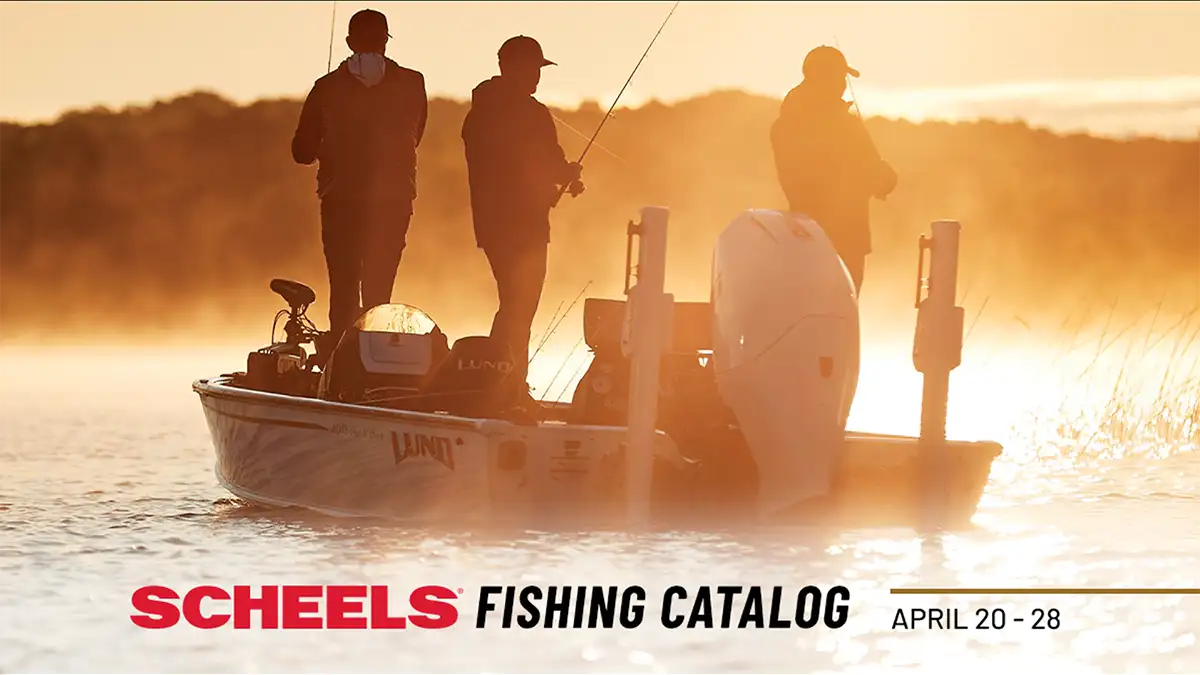Vertical cover offers outstanding bass fishing opportunities as the temperatures begin to cool. Many of us fish vertical cover, such as dock posts, but do we really fish it correctly?
According to FLW Tour pro Bill McDonald, very deliberate and precise presentations are necessary in order to take full advantage of vertical cover. Although much of his success comes through process of elimination, there are 5 presentations that consistently produce big bass for him.
- Spinnerbait
- Jig
- Stick worm
- Creature bait
- Topwater
Spinnerbait
When an abundance of shad is present, McDonald keeps a spinnerbait nearby when dissecting vertical cover. We tend to overlook the effectiveness of spinnerbaits, but they’ll save the day in a hurry throughout this time of year.
- Single willow leaf—”I modify a Strike King Burner Spinnerbait and use a single willow leaf whenever I’m around vertical cover,” McDonald said. “A single willow lead has a great flash on the fall and emits enough vibration to get the bass’ attention. It will out-fish almost any other blade combination around vertical cover.”
- Flip and pitch it—”I fish a spinnerbait much like I would a jig around dock posts and timber,” McDonald said. “Let it fall on slack line and when it hits the bottom, stroke it about two feet off the bottom two times. If you don’t get a bite in the first two hops, you probably won’t get bit. You’ll know when they hit it—you’ll get some very violent strikes with this technique.”
- Use spinning gear—”A lot of anglers shy away from spinning gear, but it’s important to use it in this situation,” McDonald said. “A
What is the Pendulum Effect? When you cast to a piece of cover and your bait falls to the bottom on a tight line, it will cause your bait to swing back to the boat. This makes it difficult to make presentations nearby key pieces of cover.
spinning reel will allow your spinnerbait to fall much straighter, which will keep it in the strike zone longer. Casting reels will make the spinnerbait ‘pendulum’, and by the time it hits the bottom, it’s a few feet away from your actual target.”
- Parallel dock posts—”Paralleling dock posts with a spinnerbait is an excellent way to figure out which part of the water column bass are holding in,” McDonald said. “You can wake it across the surface on one cast and bump the bottom with it on the next cast. After a few bites, you’ll have a great idea of where the bass are sitting.”
Jig
https://s3media.247sports.com/Uploads/wired2fish/2013/10/bill-mcdonald-holding-jig.jpg
When McDonald is looking for a big bite on vertical cover, he most often uses a Strike King Denny Brauer Structure Jig. With its big profile and snag-resistant design, he’s able to efficiently target standing timber and dock posts.
- Watch your line—”If the fish are aggressive, they’ll eat a jig on the fall,” McDonald said. “This makes it very important to pay close attention to your line. As it’s falling to the bottom, you’ll often notice a small tick or jump in your line. You probably won’t feel it, so you have to be a line watcher. Hooksets are free, so it’s always a good idea to set the hook upon seeing any type of line movement.”
- Replicate your presentation—”One of the biggest keys to catching more bass is paying attention to what you were doing when you got your last bite,” McDonald said. “The bass ate your jig for a reason, so if you can replicate it, you’ll be able to get on a strong jig pattern.”
- Yoyo it—”A lot of vertical structure will have little pieces of horizontal structure protruding from it,” McDonald said. “When you feel your line coming over horizontal structure, you’ll get a lot of bites by simply yo-yoing your jig up and down. It keeps it in front of the bass’ face, so even if it’s not hungry, you’ll be able to irritate them enough to create a reaction strike.”
- Experiment with your line size—”I primarily use a 1/2-ounce jig around vertical cover, but your jig’s fall-rate is very important,” McDonald said. “It’s going to fall a lot slower on 20-pound Seaguar InvizX Fluorocarbon Line as opposed to 12-pound fluoro due to the increased resistance, so it’s always a good idea to change things up throughout the day. Start counting as the bait falls—if your line goes slack prematurely, you know it’s a bite.”
Stick worm
Stick worms may not look like much in the package, but they’re bass-catching machines around vertical cover. McDonald uses a Strike King Perfect Plastic Ocho to overcome tough fishing conditions.
- Wacky rig—”When you rig a stick worm wacky style, it displaces a ton of water as it falls next to vertical cover,” McDonald said. “I simply hook an Ocho right in the middle with a 1/16-ounce Mustad Fin-Acky Hook and let the worm do most of the work. I’ll barely twitch it on the fall and once it hits bottom, I just pop the slack in my line.”
- Watch your line—”Much like jig fishing, a lot of your bites with a stick worm are going to come on the fall, so you have to keep an eye
Pull, don’t snatch: When setting the hook on a wacky rigged stick worm, execute a pulling hookset– don’t snatch. You’ll be using lighter line and a monstrous hookset can lead to a broken heart.
on your line,” McDonald said. “Some of the biggest fish will barely grab ahold of it, so if you notice your line swimming to the side, it’s time to set the hook.”
- Cast past your target—”In order to stay next to a piece of cover, I cast a foot or two past the vertical cover,” McDonald said. “You want the stick worm to slowly fall as close as possible to the piece of cover and casting past your target ensures it will happen.”
Creature bait
https://s3media.247sports.com/Uploads/wired2fish/2013/10/bill-mcdonald-flipping-vertical-cover.jpg
In especially gnarly vertical cover, McDonald prefers using a creature bait, such as a Strike King Rage DB Craw or Strike King Rage Tail Craw. The smaller profile of a creature or craw-imitation soft plastic decreases his hang-ups and allows him to target much thicker cover.
- Texas rig it—”If I’m around a lot of really thick limbs, it’s hard to beat a Texas rig,” McDonald said. “By hiding the hook point into the
Use a fast reel: A high-speed reel is essential to flipping and pitching Texas rigs. McDonald chooses a 7.1:1 Lew’s Tournament Pro Speed Spool Casting Reel in order to retrieve any slack line quickly and efficiently.
I’m able to fish deep standing timber or dock posts adorned with brush piles without getting snagged. The quickest way to ruin a good piece of cover is by getting hung up and yanking it free, so minimizing hang-ups is paramount.” - Add bulk for bigger bites—”Bass can be very picky at times and they’ll often get very keyed-in on a larger profile,” McDonald said. In order to maintain the weedless properties of a Texas rig while increasing its profile, I peg it with a skirted weight, such as a Strike King Slither Rig. It’s the best of both worlds.”
Topwater
McDonald also does a lot of damage with hard topwater lures around vertical cover—especially if the water is clear. He alternates casts with a Strike King KVD Sexy Dawg and a Strike King KVD Splash Popper until he discovers what the bass prefer on a given day.
- Underneath docks—”If you want some incredible topwater bites, try skipping a topwater lure underneath docks,” McDonald said. “Work it as close as you can next to the posts, concentrating on the shady side of the cover. When the bait nears a post, pause it for a few seconds and you’ll be surprised how many big ones will eat it.”
- Bluebird days—”This is an outstanding pattern on bluebird days, especially in warmer water temperatures,” McDonald said. “When you
Quick tip: In order to get the most of his topwater fishing, McDonald constantly experiments with his retrieve cadences. The bass’ preference can change throughout a single day, so it’s important to keep trying new cadences until you find one that works.
target the shady parts of vertical cover, it doesn’t matter if it’s lowlight conditions or not—they’re in the shade so it doesn’t make a difference to the bass. The high skies position bass on cover, making it much easier to target the most productive areas.”
- Be patient—”You’re not going to get a bunch of bites with this technique,” McDonald said. “But if you can stick with it throughout an entire fishing day, you’ll probably end up with a big bag of fish. If you’re looking for a kicker fish in a tournament, try devoting a few hours to this technique. If you’re patient and deliberate with your approach, you’ll be rewarded.”
Instead searching for more attractive horizontal cover, spend some time this year targeting vertical cover. Not only will it hold big bass, but it’s often overlooked by many anglers. Remember—unpressured fish are going to be easier to catch.
What is your favorite type of vertical cover? In which times of year do you have the most success on it? Comment below!













